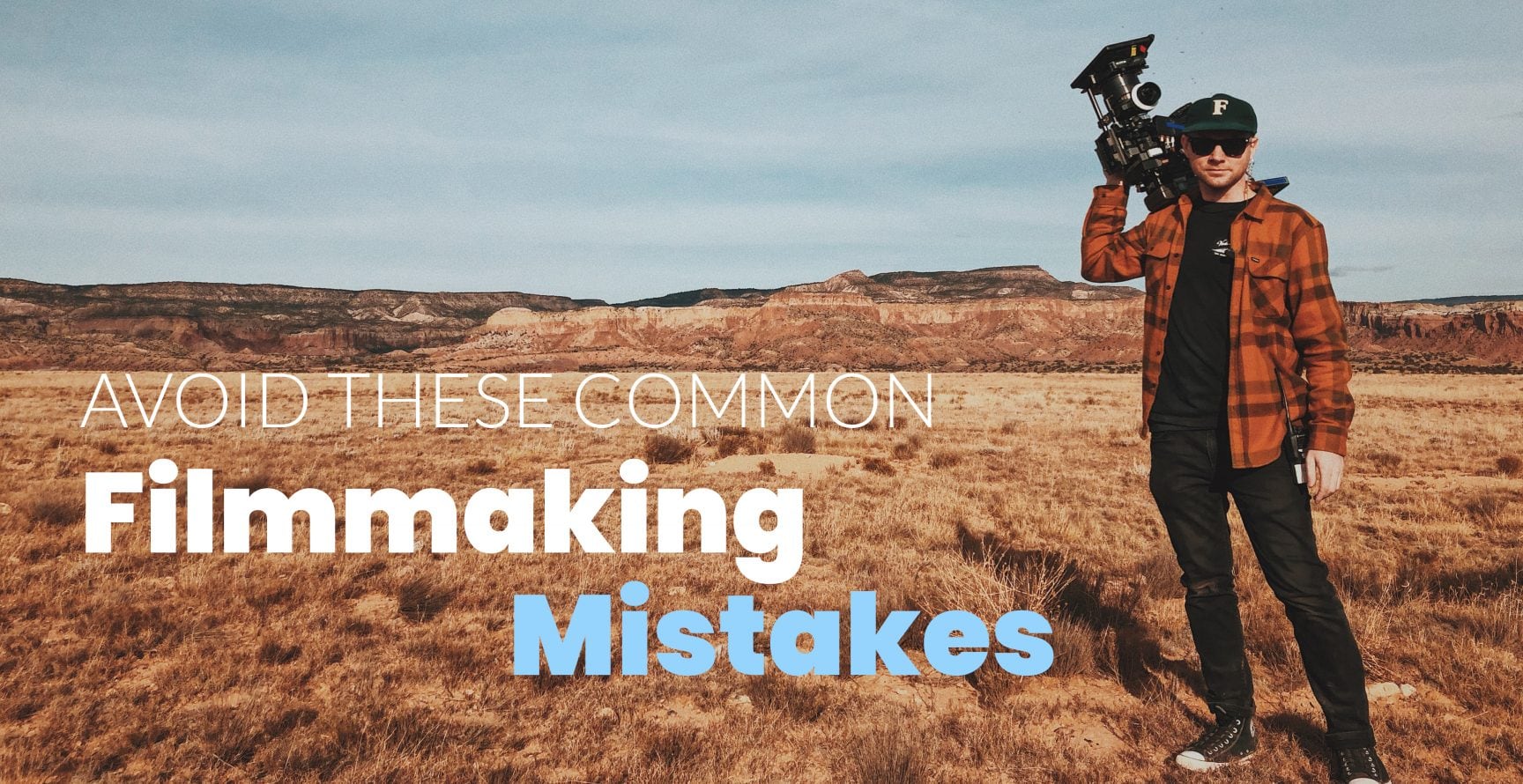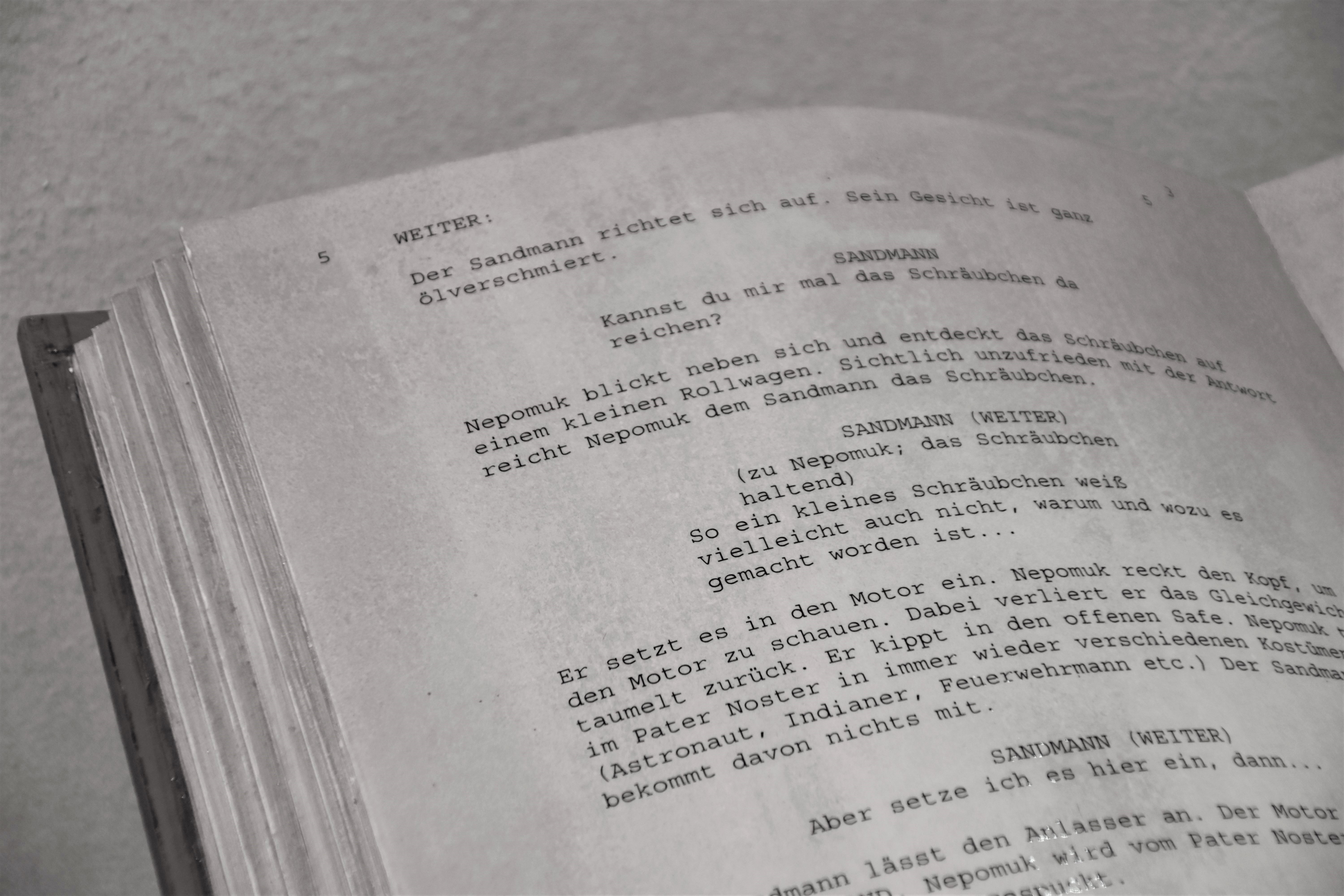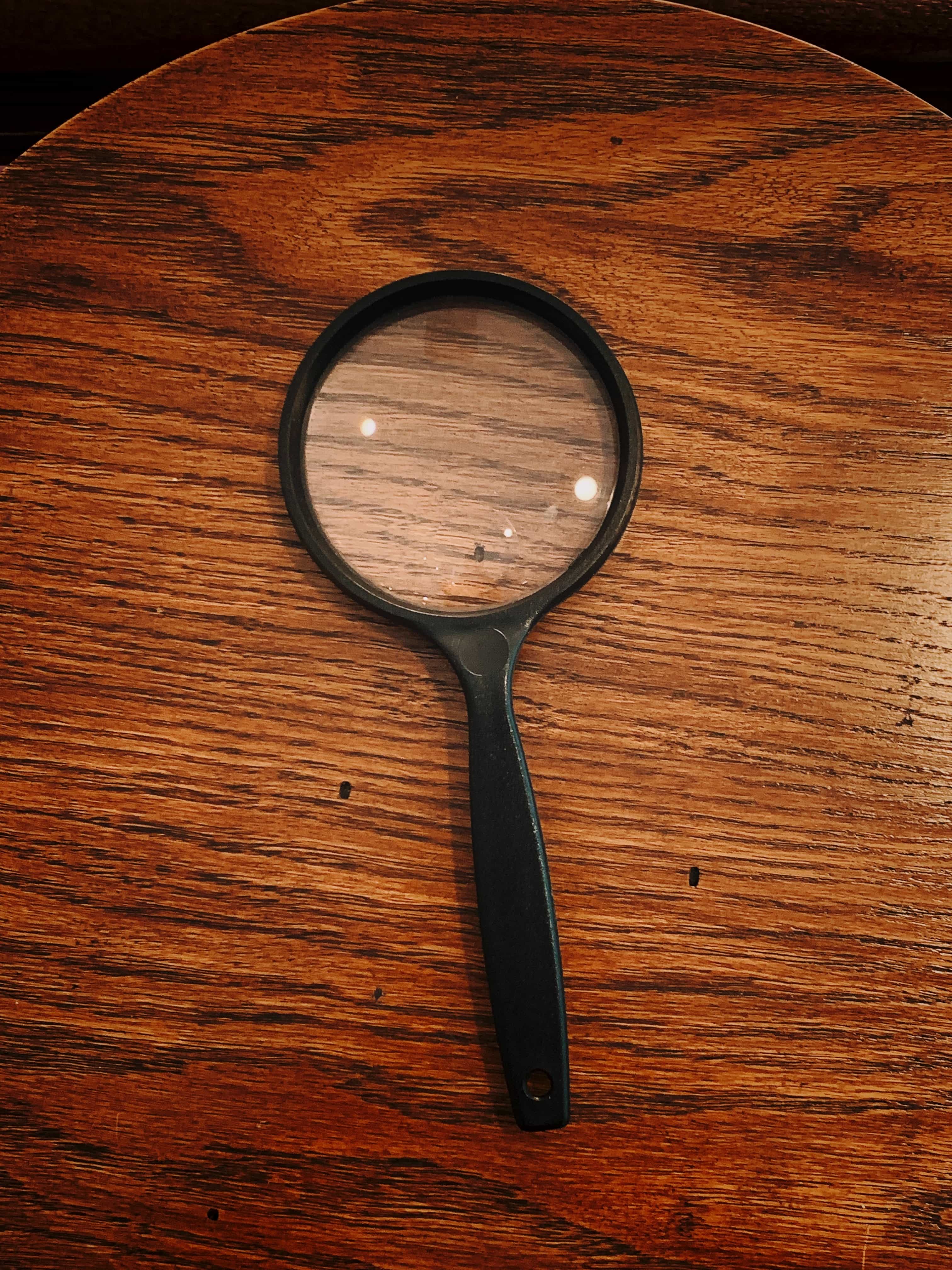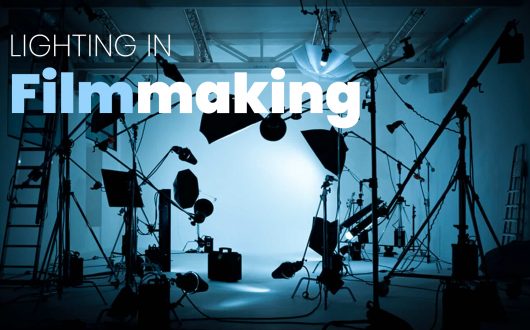
The Audio Buzz Blog

Avoid These Common Filmmaking Mistakes
Filmmaking is art, and art is subjective, so you could argue that there are no mistakes, only creative choices. Although, if you did argue that point, you’d be wrong. Creative decisions are one thing, but there are fundamental aspects of filmmaking that you must get right if you want to connect with your audience. You might read this and think it doesn’t apply to you, but if Ridley Scott can miss a metal gas canister showing on a chariot in his Roman Empire epic, Gladiator, you can make mistakes, too. One of the biggest causes of any filmmaking mistake is getting too wrapped up in your project without taking a step back; we have all been guilty of that at one time or another. When you get too close, you often miss the small details by focusing too much on the end goal, the bigger picture. So, we want to identify some of the most common filmmaking mistakes to help you avoid them, unlike poor Ridley.
Here are our top 10 common filmmaking mistakes that you should avoid.
Don’t Expect to Turn a Terrible Screenplay Into a Great Film!

Photo by Waldemar Brandt on Unsplash
Every film starts with an idea that develops into a screenplay, so it makes sense to start here.
The best way to sum it up is to think about writing music for an orchestra; if a performance is underwhelming, sometimes the mistake is in the pen.
The mistake is in the pen is a bit of a muso phrase, which means the writing and arrangement of the music is flawed, rather than the performance.
If the written music is terrible, it won’t matter if Yo-Yo Ma plays it in Carnegie Hall, it will still sound terrible if he plays it according to the sheet.
The equivalent in filmmaking is not knowing when to give up on a bad idea.
A bad idea leads to a bad screenplay, and ultimately a bad film.
There are exceptions, and we are in no way encouraging you to give up on something that you believe in passionately.
It’s more about being honest with yourself and not trying to force anything.
If you find that you are doing rewrite after rewrite, it’s probably a sign that you should take a step back and ask yourself, is it worth it?
Our ultimate checklist for filmmaking talks about turning a good idea into a screenplay.
Start as you mean to go on, if it’s the right idea, you will know.
Don’t be a Cliché in an Industry Full of Clichés

Photo by Markus Spiske on Unsplash
Saying: “Be original” is itself a bit of a trite thing to say because it’s not that simple.
Very few new films are built on a completely unique idea, and if yours is, then more power to you, you’ve done well (providing it’s a good idea).
So much has been done before that it can be difficult to be unique, but what you don’t want to be is obvious.
Even if you are recycling an existing idea, you have to find a way to make it exciting again.
Life is all about perspective, and so is filmmaking. There are many ways to tell the same story depending on where you stand.
If your film is a love story, you need to figure out what makes it more than just another love story.
For the duration of the movie, the characters are real people with history, family, problems, and everything else that real life brings.
Don’t make the mistake of thinking your characters only go as deep as you can physically show on camera.
Everyone knows the old saying; a picture speaks a thousand words.
To an extent, it goes both ways, because a few carefully crafted words can paint one hell of a picture.
Finding that depth of character is one way to avoid being a run of the mill cliché.
Another way is to think outside the box, and don’t be scared to put your stamp on something.
There’s a lot to be said for respecting the genre; people expect certain things from certain films.
But it shouldn’t come at the expense of losing your identity as a filmmaker.
If you are reading this, there is a good chance you can name filmmakers who have influenced you.
Every generation learns from past/current masters; whether it’s Kurosawa, Woody Allen, or Scorsese, you rightly respect their work.
Respect shouldn’t turn into imitation; do you think the icons above got where they are by walking in the footsteps of their idols?
They might have taken a similar path, but you best believe they weren’t scared to stray off course, and that’s why they stood out.
Of course, when you do your own thing, there is always the risk of catastrophic failure.
You might be told you bastardized a genre, and your film will be used as an example of how not to make a movie.
It’s a thin line that you must walk, knowing which ideas to develop and when to reign yourself in.
At the risk of sounding like a fortune cookie (from a bad movie), fortune favors the brave.
Would you rather be remembered for being yourself or forgotten for trying to be someone else?
Beyond the notion of copying someone else’s style or doing what’s expected of the genre, there are lots of amusing little clichés that pop up in too many films.
Get Your Facts Right
Check yourself before you wreck yourself! ( This point isn’t just a poor excuse to say that, honest).
It’s an extension of making sure you have your story/screenplay in order.
It’s easy to write confidently about almost anything without knowing every single detail about the topic.
That’s because your screenplay won’t account for every single thing that you see on the screen at any given time.
So, the research doesn’t stop once you have your plot together.
For example, let’s say there’s a shot in your film that shows two teenagers chatting on the steps of an apartment in 1970s New York.
The screenplay won’t detail what teenagers wore in 1970s New York, or more importantly, what they didn’t wear.
If you have the most touching, heartwarming dialogue, it won’t ring true if one actor is wearing an Apple Watch, and the other a Batman Begins shirt.
Unless it’s a time travel flick, in which case, ignore this advice, and just make sure your character doesn’t alter the space-time continuum; otherwise, your parents won’t kiss at the enchantment under the sea dance. (I love Back to the Future, I won’t apologize )
Whatever genre of film you are making, it’s vital that you get the facts right, and keep everything period correct.
Have a look at the gas canister on a chariot in Gladiator, sorry again, Ridley.
Don’t Miscast Good Actors, Don’t Cast Bad Actors

Photo by Free To Use Sounds on Unsplash
It’s tough to get casting right if you are on a tight budget. You are making the most of what you’ve got.
You might not have the luxury of auditioning the Daniel Day-Lewis’ of the world, but there’s always new talent to be found.
If you don’t feel like the acting talent available to you is at the standard you had hoped for, then you have to decide if it’s time to proceed or postpone.
If you do proceed, the least you can do is play to your actors’ strengths, and that applies even to the best actors.
When an actor is a physical comedy genius, don’t cast them as a depressed, self-loathing lead in a serious tear-jerker.
I’m in no position to question anyone’s acting range, but I have to imagine The Notebook or Goodfellas wouldn’t be the same movies had Will Ferrell been cast in the lead roles.
It’s about identifying the best talent available and casting them in the correct roles.
Remember, being a fantastic actor doesn’t automatically make someone fantastic for every role.
Don’t Choose Style Over Substance
Style over substance makes for an exciting trailer, but it gets found out pretty quickly in feature-length.
As you can probably tell already, we firmly believe that the story is king.
There are genres where the balance between story and visuals has room for negotiation.
You wouldn’t go to see a Michael Bay movie without expecting gratuitous action scenes, a helicopter, and most likely some explosions.
Not all of those action scenes will be vital to the story, at least not in a direct way.
But they still serve a purpose; they sell the audience a lifestyle or attitude that enhances your character’s personality.
A super cool special agent isn’t really super cool till they have a high octane car chase that doesn’t seem to phase them one bit.
Sometimes, these kinds of scenes are just there to look good and fill time, which is also okay.
The problem lies when the balance starts to tip in favor of the superficial scenes over a meaningful story.
If you start to fill holes in your film with gratuitous scenes because you need to rather than because you want to – you have a problem.
Don’t Settle for Poor Sound and Lighting

Photo by Folco Masi on Unsplash
For most people, thinking about making a film means thinking about how it will look on screen.
Ironically, poor sound will make viewers switch off faster than poor video.
Think about it, how many times have you watched a movie that wasn’t great quality video, but you put up with it anyway?
Have you ever watched a movie when you couldn’t hear the dialogue properly?
It’s understandably tricky if you are on a tight budget, and you can’t go out and buy the best microphones, but there’s always something you can do.
If you check out our ultimate checklist for filmmaking linked above, we detail some suitable microphones.
Have a look at these tips on getting more cinematic sound.
Even if you can’t buy expensive gear, there are cheap options that provide far better sound quality than relying on the camera’s microphone.
Beginner filmmakers might never have thought about this, but cameras don’t see things the same way the human eye does.
So when you see all of those big lights on a movie set, they are there to help the camera see things more as we do.
Meaning all of that artificial light is there to make the scene look natural, as counter-intuitive as it might sound.
Budget restrictions might play a part in the lighting sources that you have available, but there are always options.
Rather than go on about it here, you should head over to our quick guide to lighting in film, once you finish reading this post, of course.
Say the Right Things and Know When to Shut up!
What we mean by this is to be careful with your dialogue, and there are a few ways you need to do that.
First of all, let’s briefly return to an earlier point, and keep everything period-correct.
Being period-correct goes for dialogue too.
Some words and phrases come and go over periods of time, and to ring true, you need to use a suitable vocabulary, especially when it comes to slang.
If you are making a modern-day film, and most of you probably are, you need to think about local dialects.
It’s not enough to have the right accent if you are saying the wrong things.
To give a simple example, think of The Dark Knight’s Commissioner Gordon, played by Gary Oldman.
If Oldman suddenly burst into some cockney rhyming slang exclaiming we need to get Batman on the dog and bone asap, even with the American accent, it wouldn’t work, would it?
If you are the curious type, like us, you can check out some actors who do accents very well or hit up YouTube to find some who don’t do so well.
Sometimes your story can take place anywhere, and if that’s the case, you should stick to what you know.
Although he’s laughing all the way to the bank, Ben Affleck comes under a lot of criticism at times for not being convincing in the role.
It’s no surprise that performances that get him the most praise are the ones where he plays a guy from South Boston; in other words, he plays what he knows.
We should say, as a filmmaker/director, Ben Affleck is far less criticized and has a stellar reputation, we aren’t anti-Affleck.
Most of the dialogue will come directly from your screenplay, but things change when filming, so be careful not to go down the wrong path while experimenting.
That brings us to the ‘know when to shut up’ part.
The best films are ones that make the audience think and feel.
Do you know when you get someone who makes a witty comment, then explains it afterward?
They assume the audience missed the cleverness of the comment, and lose any appeal it recently had.
You don’t want your movie to be that person.
As we said earlier, filmmaking is art, and art is open to interpretation.
Ultimately, the story starts and ends wherever you say it does.
Between those two points, you should never take away the audience’s ability to think for themselves.
The viewer should be able to put themselves in the situation they see and set their own expectations for what’s coming next.
That way, if there is an unexpected twist, it hits much harder, and viewers relate to characters in a more human way.
You don’t want to explain every feeling and emotion the character is experiencing through dialogue.
Not only will it become boring, but it will also make your characters less believable.
A good film will guide the audience without them knowing; it won’t draw them a map straight to the finish line.
Maintain Momentum, Don’t Become Stagnant

Photo by Valerie Blanchett on Unsplash
This advice is a continuation of knowing when to shut up.
This time it’s not just about dialogue, it’s every aspect of your film, and knowing when enough is enough.
It’s easy to see when a story has been rushed; it’s underwhelming and, most likely, a result of poor writing.
Even with a fantastic screenplay, there is always a risk of losing the story if you let individual acts or scenes drag on too long.
If it takes 90 minutes to tell your story on screen, don’t tell it over 180 minutes because you want it to be an epic (unless you’re Tarantino, of course)
Movies like The Godfather are so long because they need to be, and the story is deep enough to hold an audience for that length of time.
When you have a much thinner script and stretch it out because you want to, rather than need to, you can expect a harsh response from your audience.
It’s not easy to get the balance right, it can’t be rushed, and it can’t drag on.
Plot-lines and characters need to develop naturally, so think more about momentum than pace.
Whether your film moves fast or slow, make sure it moves steadily.
Don’t Forget About Continuity
Continuity mistakes are perhaps the most common mistakes, even in big-budget movies.
They are certainly the funniest!
Continuity is making sure things remain consistent from one shot to the next for the film’s duration.
For example, if an actor in full makeup has a scar above their left eye in one scene, they can’t go home and return the following day to have the same scar applied above their right eye.
It can be even more straightforward like if a character is seen drinking a Coke, it can’t suddenly be a Pepsi when the camera pans and returns.
I won’t blame you if you think you’d never be stupid enough to let something like that happen.
You don’t even need to be a filmmaker to find it ridiculous that these hilarious mistakes are missed.
The fact remains, it happens, and it happens in films made by talented and experienced filmmakers.
It may happen on large productions because the director is trusting a team of people to deal with the smaller details.
If that’s the case, it should still be caught by someone at some point in the chain.
For smaller productions or first-time filmmakers, you might not have a team of people, so the responsibility is yours.
From my experience, when you work on any creative project, it’s easy to get tunnel vision and charge on to the end.
Like I said earlier, it’s essential to take a step back regularly and give yourself some breathing space.
If you don’t, that’s when the small details are missed, and millions could see your film on YouTube.
Well, at least the scene with the glaring continuity error!
Check out some of the most unbelievable continuity errors from major films.
Don’t Choose the Wrong Music
Music is obviously very close to our hearts; it’s what we do, and we are very passionate about getting it right.
Rather, we are very passionate about helping you get it right.
We said earlier that the story is king, and that’s true, but if there’s one thing that can overwrite the emotion of the scene and dialogue, it’s music.
It doesn’t matter whether the music is subtle or purposely obnoxious; it’s there to stir the viewers’ emotions.
As we explain in our guide to finding the perfect music for your video, there are different ways to get the right results.
Traditionally, music should match the scene in both atmosphere and pace.
That means action scenes tend to have music with a faster tempo and intensity, while dramatic scenes tend to have far more subdued music.
It’s also common for music to be purposely opposing to the imagery.
For example, choosing soothing music for a hectic action scene is a way to show the characters strange ability to stay calm.
Whether the music is chosen traditionally, ironically for comic effect, or to oppose the scene, it needs to have a clear purpose.
If the music isn’t right, it will confuse viewers and undo even the best acting and cinematography.
Before choosing your music, please read our guide linked above, and make use of our Video Preview tool.
Hear music against your video before you buy; it’s the only way to get it right.
In conclusion, don’t be too disillusioned if you’ve already made some of these mistakes.
It happens to the best of us; the important thing is that you learn from your mistakes and avoid making the same ones again.
If you’re brand new to filmmaking, then you should learn from other people’s mistakes, never assume it can’t happen to you.
When you are flat broke, past your deadline with actors telling you that they can’t get any more time off work to shoot scenes; it can happen to you, trust us.
Plan well, control the things that you can control, and when the unexpected happens, you’ll be in a better frame of mind to deal with it.
Above all else, be creative, be yourself, happy filming.







